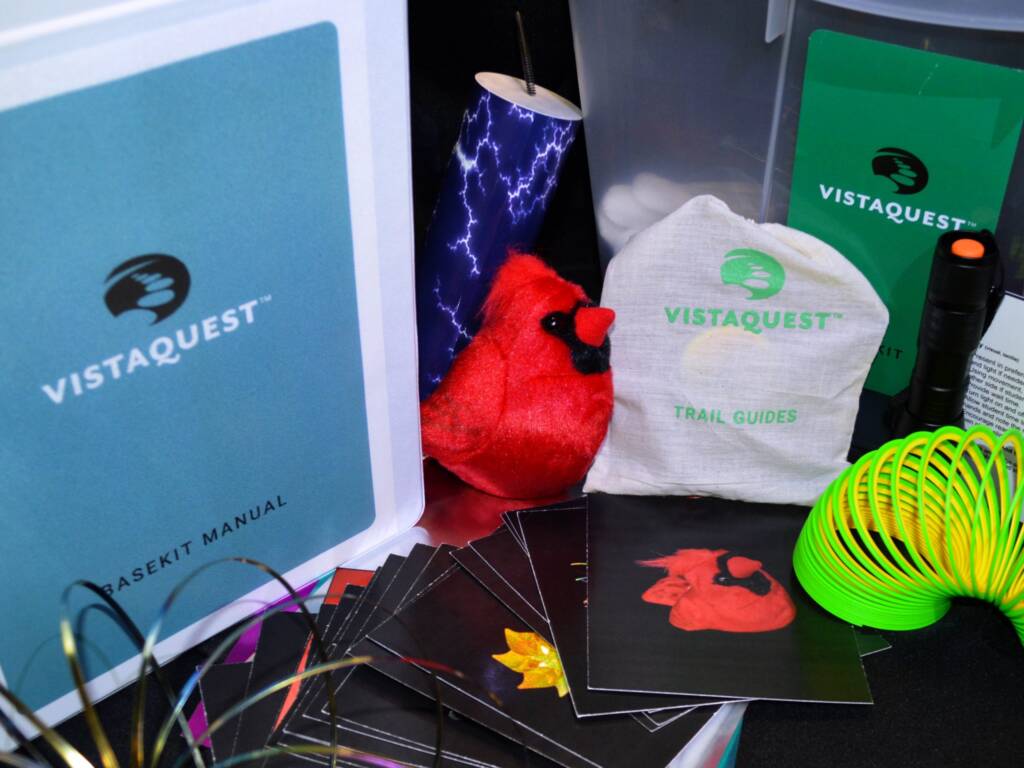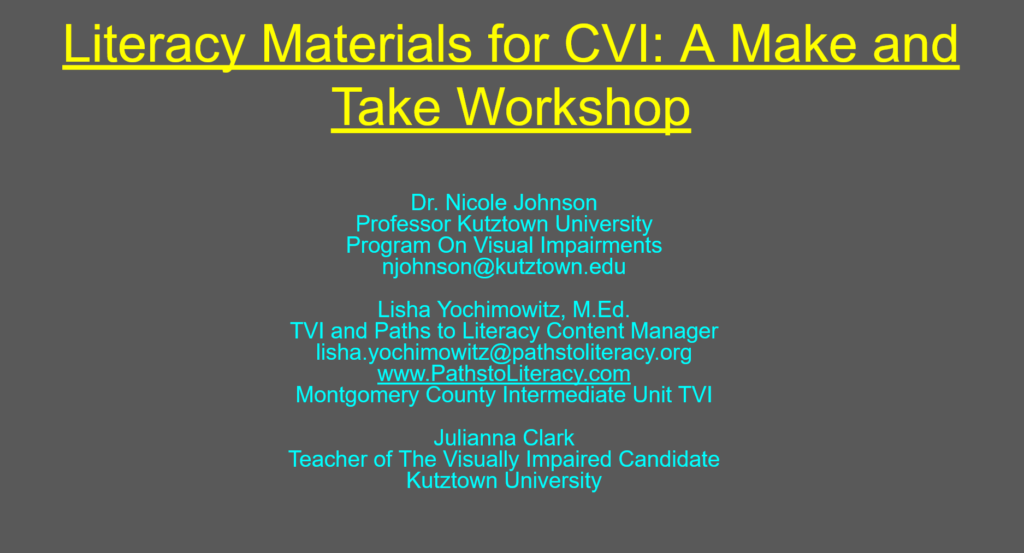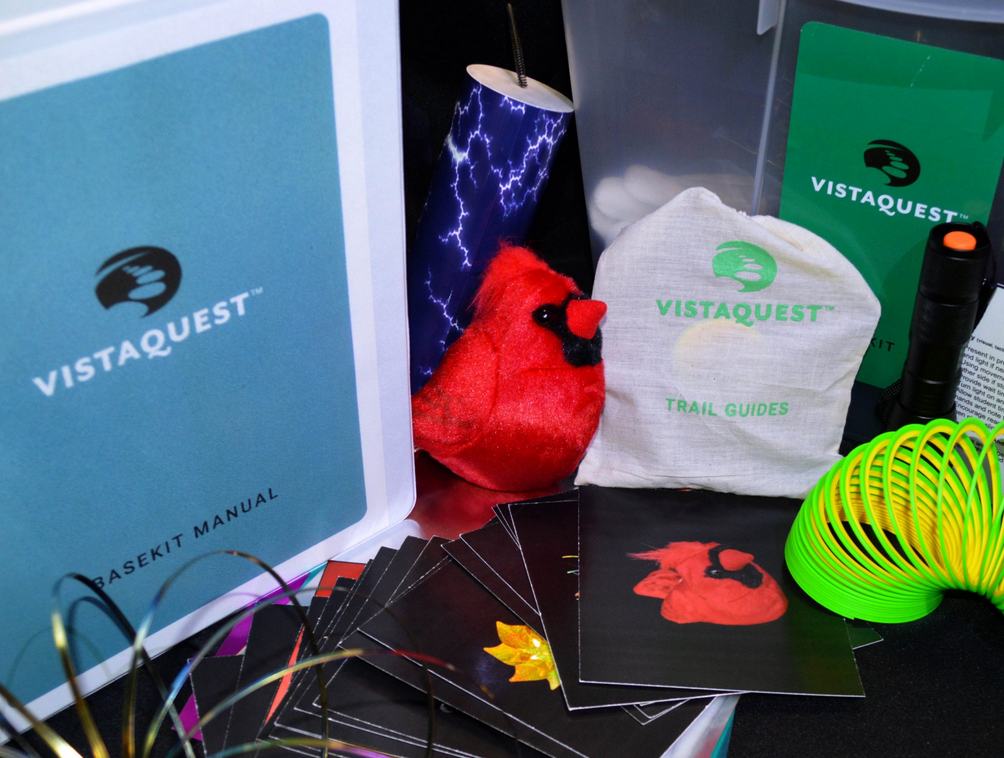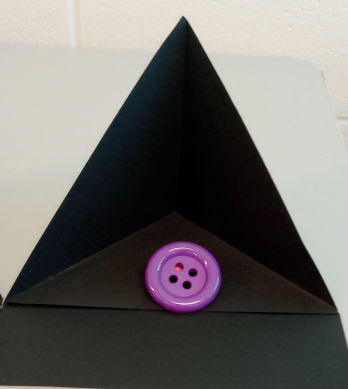As I began to dive deeper in creating a useful tool for teams supporting students diagnosed with CVI, I combined the knowledge gained from my coursework on CVI through Perkins eLearning, along with data from an independent study on the thalamus, the role of the lateral geniculate nucleus, and the pathways beyond the thalamus in the visual cortex (including both the dorsal and ventral streams). This scientific foundation helped me craft a useful teaching resource that provides effective intervention.
Seeing is a complex system occurring inside the brain. Information coming through the optic nerves from the eyes has to be cross referenced with all other sensory input in order for the brain to make sense of what one is looking at. Vision isn’t a single sensory event. It is a multi-sensory experience. As it is experienced, a memory is created. That memory is used as a reference for new information and new experiences occurring in the future. Memories are what help us understand new things. The brain is able to cross reference known memories to build meaning to new things. In other words, these cross-referenced experiences are creating neural pathways in the brain.
The thalamus is a small organ in the middle of the brain behind the optic nerve. Although only 2 centimeters in size, it plays a huge role in acting as a filter for most of the sensory input coming into the brain. The thalamus will only pay attention to stimulus that makes sense, or to whatever sensory modality is strongest at that time. If there is inadequate sensory information, the thalamus may ignore this information and not pass it on to the cerebral cortex. For example, if a student has fewer visual skills and is more auditory, the thalamus is paying more attention to the auditory input and disregarding the visual input. As a result, the student will have a harder time sustaining visual attention. The area of the thalamus dedicated to vision is called the lateral geniculate nucleus. It filters and connects information, through neural pathways, coming from the optic nerve to the occipital lobe.

Once visual information has been recognized and passed through the thalamus, it is then processed in the visual cortex. The two main pathways of the visual cortex are the dorsal and ventral streams. The dorsal stream sends information to the parietal lobe of the brain and is known as the “where” stream. It is responsible for providing spatial awareness, localizing objects, and the ability to follow through on visually guided behaviors (such as reaching, grabbing, kicking, walking, etc…). The ventral stream sends information to the temporal lobe and occipital lobe, and is known as the “what” stream. The ventral stream is responsible for object identification, recognition, and memory building. Research has shown that these two streams do not work separately. The more interconnectedness there is between the two streams, in other words, the more neural pathways between the two streams, the stronger and more reliable the information.
The brain is incredible in so many ways, but one truly amazing aspect of it is that it is always moldable. There is a sensitive period at the beginning of one’s life, the first six or seven years, but the brain does continue to have a moldable, or plastic quality, even after that. New neural pathways can be created at any time in our lives, both in the first visual pathway of the brain involving the thalamus, and then in the pathways going beyond into the cerebral cortex. Utilizing sensory-rich experiences in one’s environment will help build these new neural pathways. The more sensory-rich experiences provided, the stronger the connections between the neurons as multiple sensory modalities are involved. This provides more of an opportunity for a child to interact and remember the experience…creating a memory.
Neural pathways are created when repetition builds experiences that create meaning. The VistaQuest BaseKit was designed with this key insight in mind. Each kit includes activities that incorporate “whole-body,” multi-sensory, experiences to create memory building blocks for individuals with CVI. All BaseKit activities were developed at skill levels aligned with the Rating II guide from Dr. Roman’s CVI Range assessment. Each activity has Phase 1, early Phase 2, and late Phase 2 to Phase 3 level options depending on where the student has been assessed.

The BaseKit was created recognizing that each individual diagnosed with CVI will have their own journey in creating these memory building blocks. To lean into this “journey” metaphor, each activity is summarized in the BaseKit manual and detailed instructions are provided on each Trail Guide activity card. Each activity has a description of the purpose for the activity, the targeted CVI characteristic, and the primary and secondary visual skill outcomes. In addition to the Trail Guide card, you will see the Trail Route options as well. The Trail Routes for each activity represent the skills progress for students: Discover (Phase 1), Explore (Early Phase 2), and Blaze (Late Phase 2 to Phase 3). All materials are provided for each Trail Guide activity card along with step by step implementation instructions. As a student demonstrates competence at the Discovery activity, one can move onto the Explore and Blaze experiences.
Benefits of using the BaseKit Trail Guides will uniquely depend on each child. However, consistent, even daily, exposure will have a positive impact on furthering visual development. As familiarity is built with activities, one will begin to see improvement in a variety of ways: decrease in latency, fixating on objects with more than one color and design, recognition of objects without needing to use movement, and being able to slowly incorporate more sensory modalities.
Prior to using the BaseKit, it is crucial to have a child’s level of visual functionality assessed. This can be done through the variety of assessment resources in the field. Some of the assessments out there include the CVI Range, the Visual Skills Inventory, and the Visual Assessment Scale. These assessments provide the information needed on how CVI affects the child giving direction on how to proceed.
Another important assessment to consider is the Learning Media Assessment, including using the Sensory Balance Approach by Dr. Roman and Matt Tietjen. This assessment helps understand if the child relies on a specific sensory learning modality. Is the child a primary auditory, visual, or tactile learner? The preference of modalities can change within a child’s day depending on activities presented and the environments surrounding the child while completing activities. Intervention frequency can also make a difference as visual skills become stronger. So it is important to understand the child’s starting point.
For example, if a child is strongly impacted by CVI and primarily uses their auditory and tactile senses to understand their world, knowing the thalamus will likely not pass on visual input while there is an auditory stimulus at the same time will help select activities where the visual stimulus is first introduced with no auditory. This may need to be repeated several times for the lateral geniculate nucleus in the thalamus to process and build familiarity to then pass this information on to the visual cortex. Once this new neural pathway is formed, the auditory can start to be paired with the visual stimuli. The same process can occur with tactile stimuli. As these pathways are solidified, the student is able to make these increasingly whole-body, multi-sensory, experiences into memories.
The key is to work slowly to make sure the various sensory modalities are processed correctly, especially vision as it is the hardest modality to go through the thalamus. The BaseKit Trail Routes have been designed to be useful tools helping the brain build upon these familiar memories and expand the students’ connection to their broader environment.




